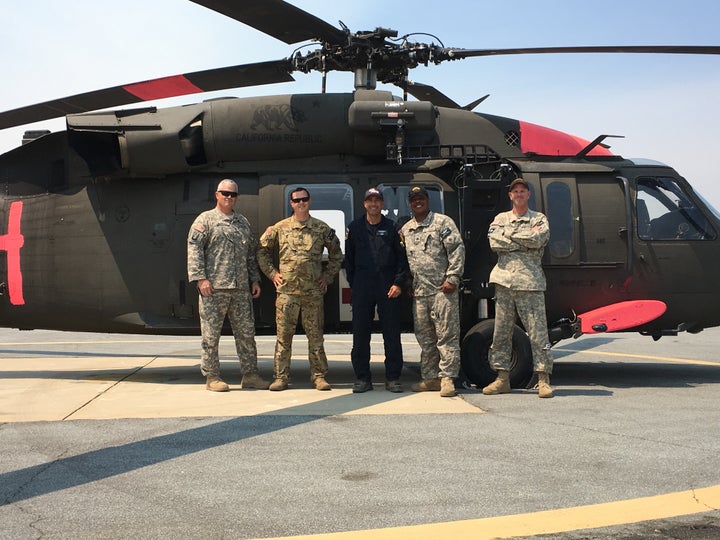
With the governor declaring a state of emergency in California, the California National Guard (Cal Guard) has been activated to assist the California Department of Forestry and Fire Protection (CAL FIRE) with their efforts to control the numerous wildfires currently burning across the state. MEDEVAC crews in UH-60 Black Hawk helicopters from Task Force MEDEVAC, which is comprised of the Cal Guard’s Charlie Company, 1-168 and Foxtrot Company, 2-135 both based out of Mather Army Aviation Support Facility, deployed to the Mineral Fire near Coalinga and the Clayton Fire in Lake County.
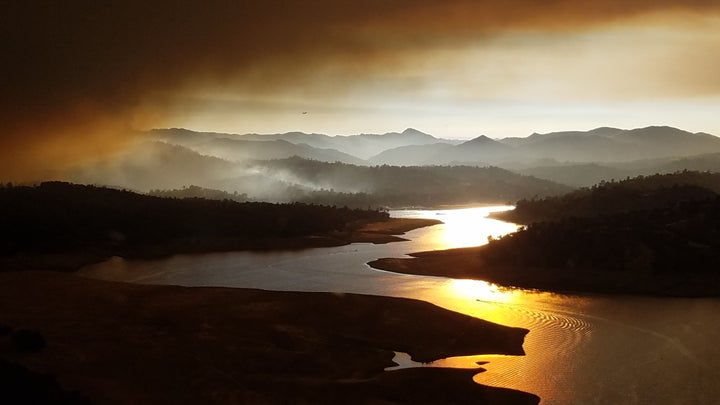
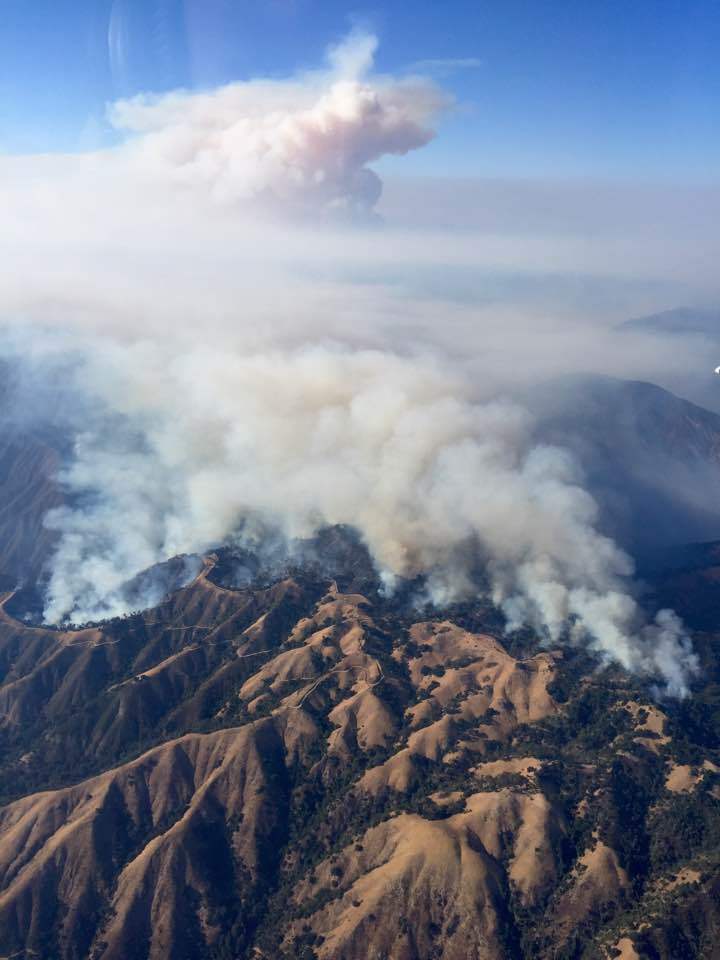
After a short time on the Mineral Fire, the MEDEVAC crew was retasked to support the Chimney Fire near Lake Nacimiento in San Luis Obispo County. The Chimney Fire is presently about 43,633 acres and about 39 percent contained. So far, they have had five missions rescuing firefighters in need of medical care (one for the Mineral Fire, four for the Chimney Fire). And it’s only been a week.
Each Cal Guard helicopter is assigned a CAL FIRE liaison called a Military Helicopter Manager, or MHEM. Capt. Alex Lujan of CAL FIRE has been an MHEM between CAL FIRE and Cal Guard for 15 years, but this is his first time in the helicopter during a MEDEVAC mission. His job is to communicate with the CAL FIRE crews on the ground and the Cal Guard flight crew, relaying information between them.
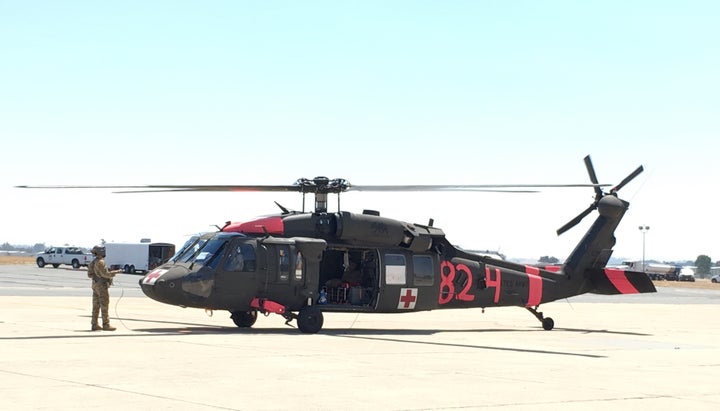
“Sometimes some translation is required,” Lujan said. “This mission is really unique. The Cal Guard MEDEVAC crews operate 24 hours a day, and we get to help the firefighters directly. We are sent into the fire zone to retrieve people and get them the medical care they need.”
The MEDEVAC helicopters are called in to do a rescue if it’s either impossible to get the patient out via ground transportation or if the situation requires the patient receive medical care quickly. When MEDEVAC helicopters are called in, it’s called an IWI - Incident Within an Incident.
“The fire is the primary incident. When MEDEVAC gets called in to rescue a patient, that is considered an incident within the larger incident of the fire,” Lujan said. “We all work together to find the patient, which can be challenging with trees, smoke, and varying terrain.”
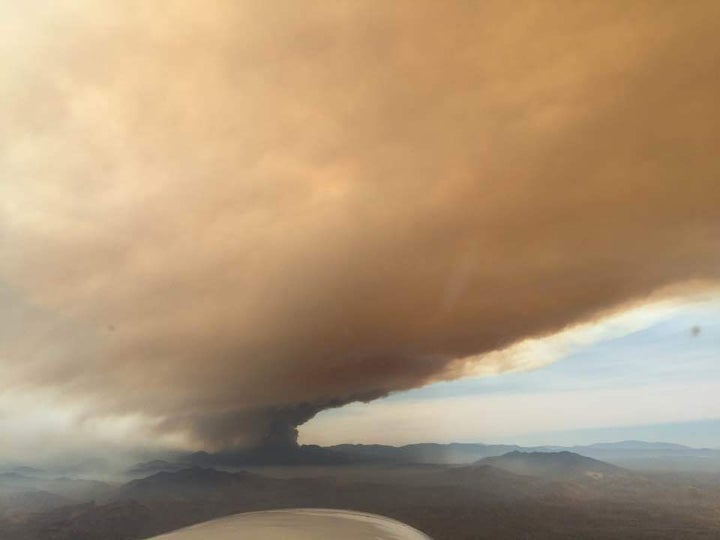
The airspace above a fire is quite hectic with aircraft flying every which way trying to support the firefighters on the ground with their efforts to contain the fire. The airspace above a fire is carefully managed. At the top, you have the air attack aircraft, which flies high above the fire and manages all the aircraft operating in the airspace above the fire. One thousand feet below them are the air tankers. They fly at a designated altitude and are “cleared in” to drop either water or retardant on specific locations. Operating below the tankers are the helicopters who are going back and forth from the fire’s edge dropping buckets of water. Into this frenzy comes the MEDEVAC helicopter. They communicate with the air attack aircraft to ensure they aren’t going to run into any other aircraft on their way to or from retrieving the patient.
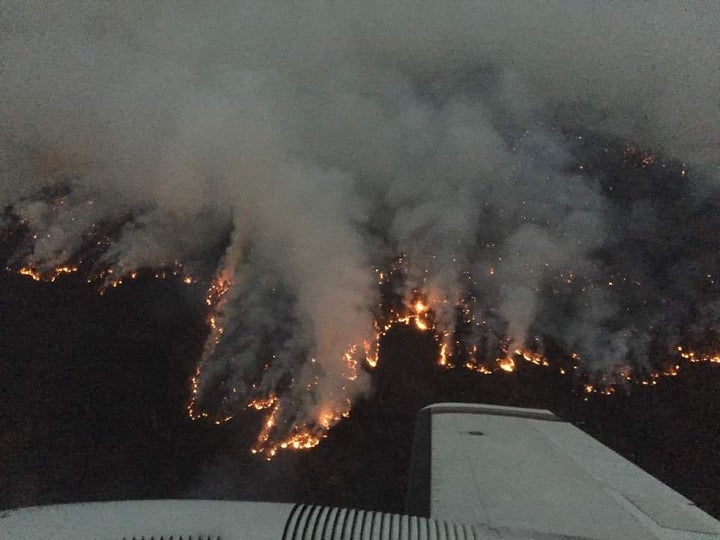
“It can get really smoky with low visibility, so we want to make sure we are not going to run across any other aircraft,” said Cal Guard MEDEVAC pilot Jeff Morreale.
Morreale is new to the MEDEVAC unit at Mather. He was previously stationed in North Carolina where he flew CH-47 Chinook helicopters.
“The MEDEVAC mission is so unique and special. We get to go and rescue an individual and get them the care they need. As a Chinook pilot in Afghanistan, we would sometimes run emergency-support missions bringing needed supplies to a unit or bringing more infantry to an active firefight, but it just doesn’t compare to the MEDEVAC missions,” Morreale said. “It’s really rewarding to know that we are helping an individual get the care they need. It’s very special to provide this support to the firefighters who are working very hard to contain these wildfires. We really get to make a difference, and I know I am part of something important.”
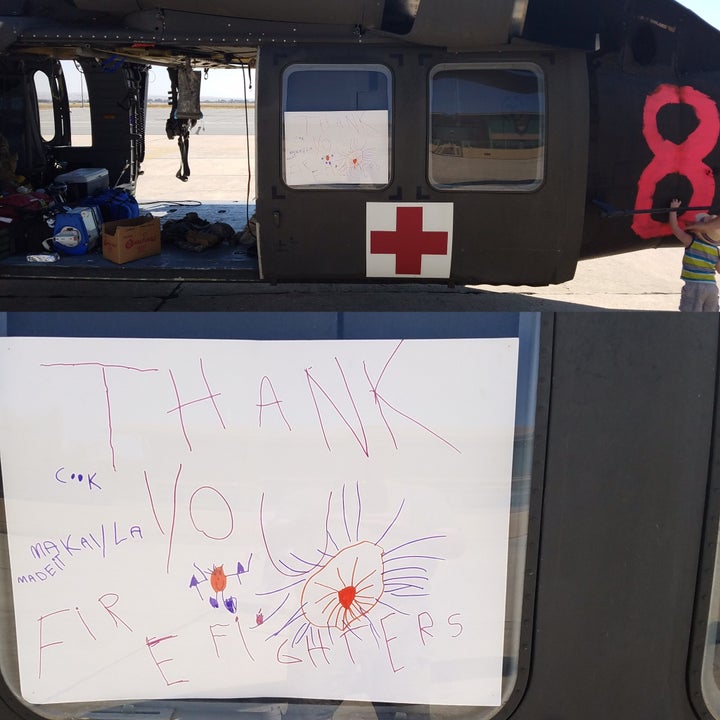
That sentiment is repeated over and over by the members of the MEDEVAC unit at Mather. They all feel a sense of honor to be able to rescue people and get them to safety.
This is Morreale’s first mission on the fires as a MEDEVAC pilot.
“It’s very hectic when we go into the fire zone,” Morreale said. “There are lots of communications going on over the radios. But this unit is the most functional and well trained unit I’ve ever worked with. I am very fortunate to be a part of this crew during my first MEDEVAC mission on the fires.”
Morreale might be new to MEDEVAC, but Cal Guardsman Julian Ross has been doing MEDEVAC missions as a crew chief for 8 years.
“This year is busier. More firefighters are getting injured and need to be MEDEVAC’d out,” said Ross.
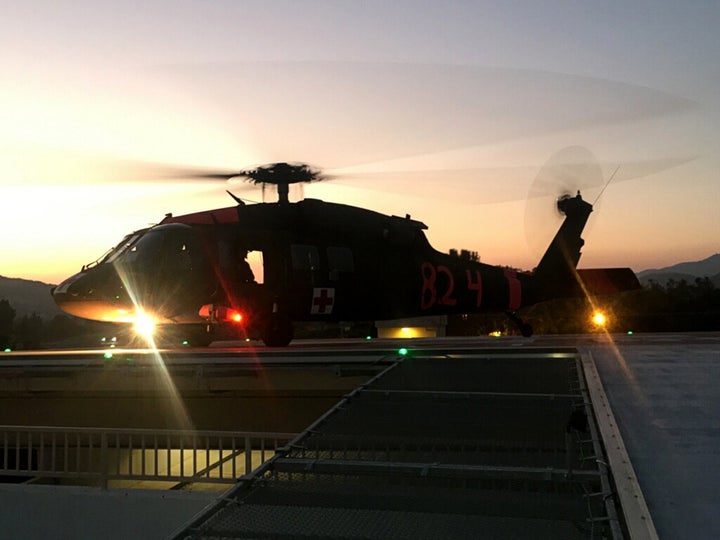
The primary job of a crew chief is as a flying mechanic. But once the aircraft is taken care of, the crew chief assists the medic and operates the hoist. Typically, when a medic needs to be hoisted in to attend to a patient, they hover the helicopter about 80 feet above the ground. But when they are hovering over a recently burned area, the risk of reigniting the fire is so great that the helicopter hovers 200 or 290 feet above the ground. The medic is lowered and retrieved from that height. It’s the crew chief’s job to operate the hoist and lower and raise the medic and retrieve the patient.
“Any movement from the helicopter is magnified for the guy on the cable. So if he’s farther away, the movement is greater,” Ross said. “You sit on the edge of the aircraft, one hand and one foot on the cable. I use my foot to keep the cable off the edge of the aircraft, and I use my hand to try and aim the medic. I want to place him close to the patient. I also have to raise and lower rescue seats or just an empty hook. We try to get these to within an arm’s length of the medic. We train a lot to be that accurate.”
The crew chief and the CAL FIRE MHEM also assist the pilots in maintaining a stable hover, but the more the pilots can maintain it on their own, the more the crew chief can focus on the medic and the patient when they are coming up or down the hoist. In order to keep the helicopter as still as possible, Morreale said you need two things.
“First you need good reference points. They need to be easily identifiable and stationary, so we can easily see them. We need one in front of the helicopter and one to the side.”
This allows the pilots to determine if the aircraft is drifting side-to-side or forward and backward, he said.
“Once you have good reference points, it’s best to aim the helicopter into the wind. It’s an aerodynamic shape designed to go forward, so air slips most easily over the aircraft when it’s aimed into a headwind.”
But Morreale said the reference points are the most important.
“If your reference points require you to aim the helicopter either with a crosswind or tailwind, you do it.”
Greg Proell is an Army Flight Medic and a certified paramedic.
“We’ve had four calls during this mission, and we were able to effect a rescue for each of them.”
All CAL FIRE crews have a paramedic with them who determines if a patient needs to be MEDEVAC’d out or if he can be taken out via ground transportation. If it’s decided that the patient needs more urgent care or his injuries are such that he would not be able to use ground transport, the MEDEVAC helicopter is requested.
“In our mission as a Cal Guard MEDEVAC unit, we maintain year round readiness. During the year, we run search and rescue missions mostly. During fire season, we take that training and apply it to supporting CAL FIRE.” Proell said. “We can fly in any time of day and at most altitudes in the state of California to rescue patients.”
A Black Hawk is piloted by two pilots, one pilot actually flying the helicopter, while the other pilot, the Pilot in Command (PC), manages everything else. In order to be a PC on fires in California, a pilot is required to have more than 500 hours as a PC before he or she can become a Fire PC. Scott St. Aubin began flying on the fires in 2007. He has been a Fire PC for three fire seasons and has flown more than 400 hours on fires with 150 of those as a Fire PC.
“As a PC, I pretty much never touch the controls. I’m too busy!” St. Aubin said. “I pay attention to the three or four radios going all the time, communicate with the crew chief and MHEM, and maintain an awareness of where we are and where other aircraft are as well as keep track of various aspects of the mission we are flying.”
The PC does everything but fly the helicopter, he added.
“On a MEDEVAC mission, there really isn’t a way to have a set plan. The variables change too quickly. We have a set framework that we use for missions and as they unfold, we plug pieces into that standard framework.”
And MEDEVAC missions require the entire crew to work together to accomplish their objective.
“When we are given coordinates for where the patient is, most of the time when we arrive the patient isn’t at that exact location,” St. Aubin said. “So we have to hunt around to find them. The whole flight crew is involved, with everyone looking around to see if they can spot the ground crew. The ground crew also assists by telling us if they can see us and, for example, they can vector us to their location (Vectoring an aircraft means giving them directions). Once the patient is located, the whole flight crew is involved in safely retrieving the patient and getting him or her to either a hospital or an ambulance.”
Three of the patients this week were taken to the Sierra Vista Regional Medical Center in San Luis Obispo. The hospital has a helipad on the roof of their parking garage. The landing zone is 235 feet off the ground and forms a square measuring 54 feet by 54 feet. For a 60-foot Black Hawk [64 feet if you include the blades], that requires a highly precise landing. The wheelbase on a Black Hawk is 29 feet, but just to be safe the helicopter is positioned diagonally across the landing zone.
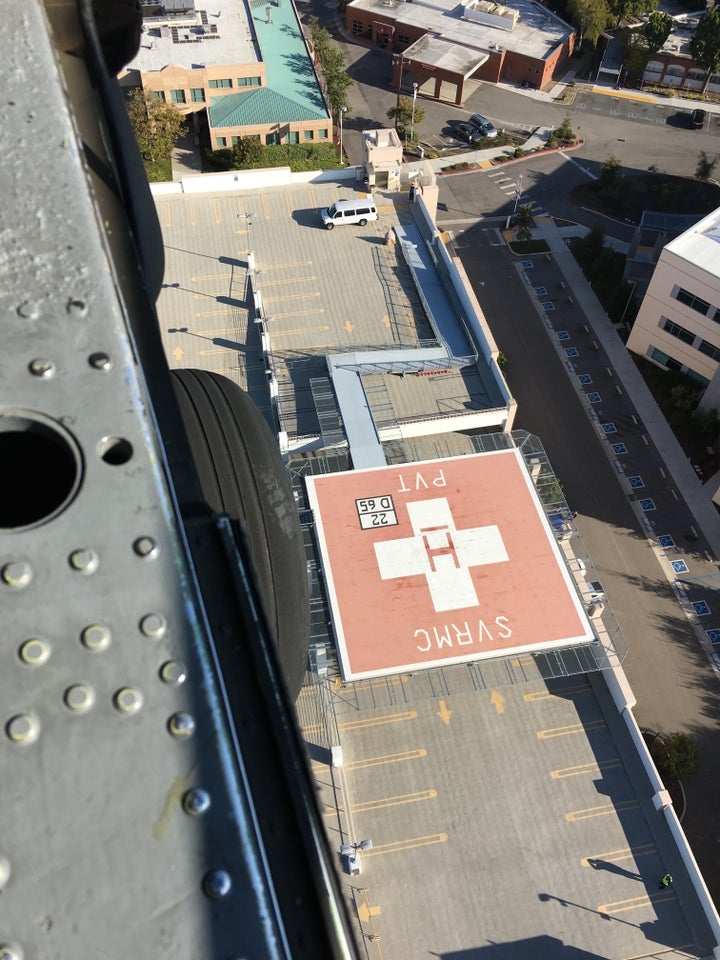
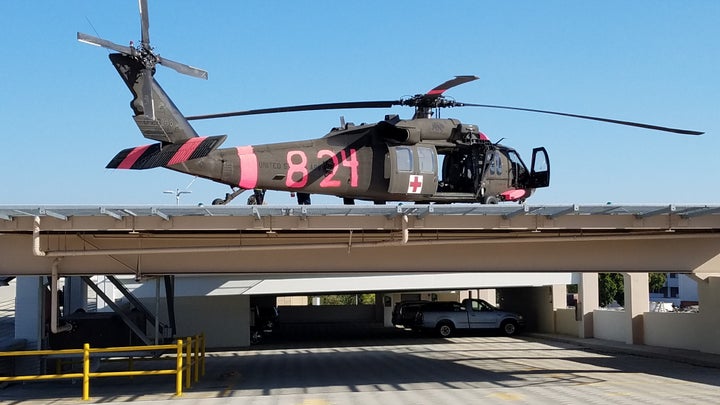
“When landing in a small landing zone, such as the helipad on top of the parking structure at Sierra Vista Hospital, I use a steeper than normal approach angle, approximately 45 degrees, so I can keep the landing zone in the ‘chin bubble’ [the window at the pilot’s feet] for as long as possible,” St. Aubin said. “But once we are over the top of it, I cannot see below the helicopter. That’s when the crew chief and MHEM take over and guide me down to the ground.”
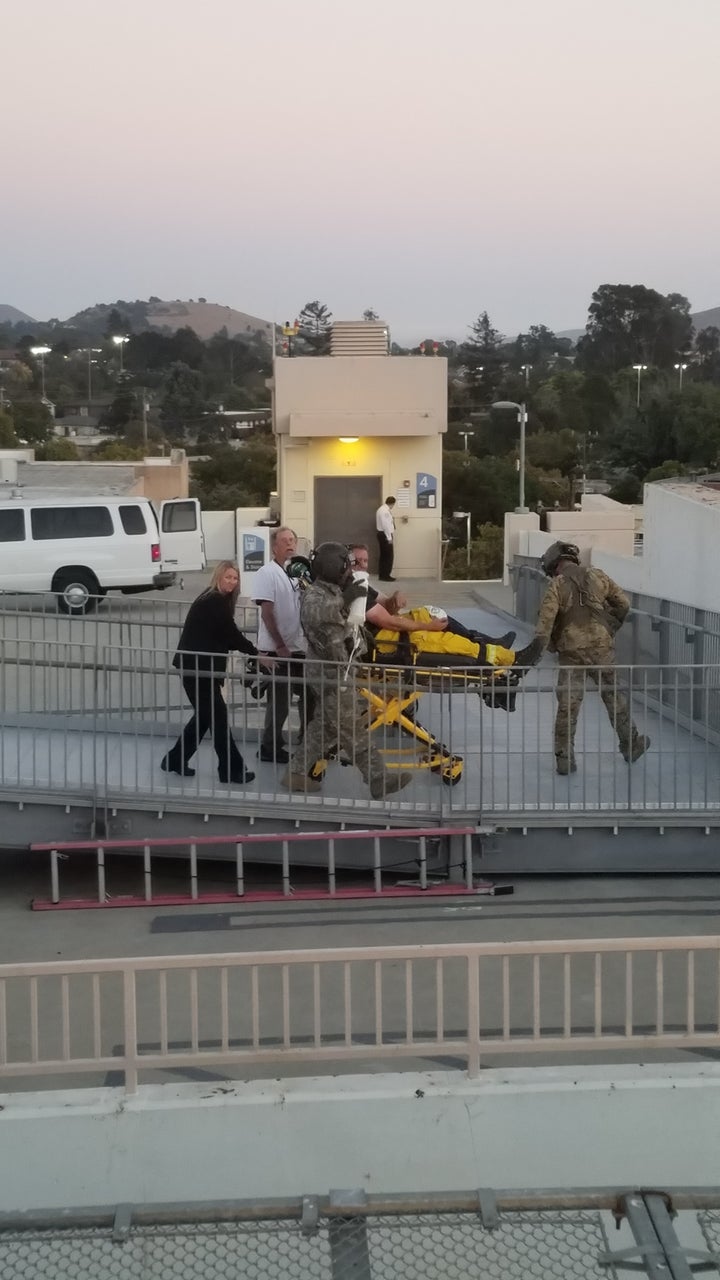
The patients are then unloaded and the medic accompanies them into the hospital to hand them off to hospital staff.
All of the patients the MEDEVAC crew has rescued this week are doing well and recuperating.
